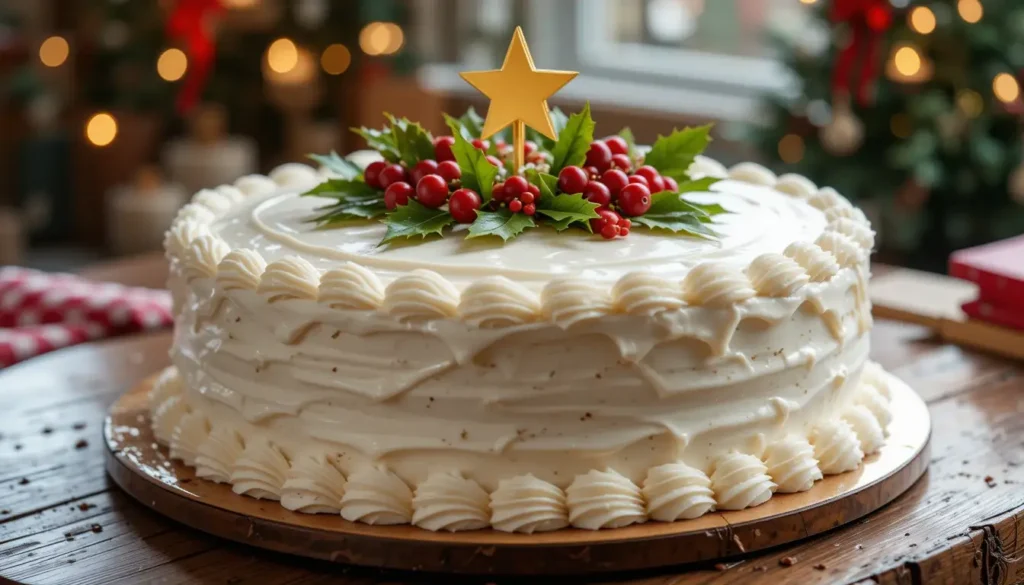When we think of Christmas, a beautifully decorated cake often comes to mind. It’s not just about the cake itself—it’s the icing that makes it magical. The snowy white layers, intricate designs, and delightful textures can transform any cake into a show-stopping centerpiece. But have you ever wondered what is Christmas cake icing made of? Let’s dive into the world of festive icing and uncover its sweet secrets!
Table of Contents
Understanding Christmas Cake Icing
A Brief History of Christmas Cake Icing
The tradition of icing Christmas cakes goes back centuries. Originating in Europe, the earliest versions of icing were made from a simple mix of sugar and egg whites, referred to as “icing” because it resembled a frosty glaze. Over time, bakers introduced elaborate designs, making icing an integral part of holiday celebrations.
Today, icing is much more than a decorative element. It’s a symbol of festive joy and creativity. Each type of icing—from royal icing to buttercream—tells its own story, adding flavor and flair to the beloved Christmas cake.
“Christmas cake icing is like the wrapping on a gift—it elevates the experience and makes it feel special.”
Importance of Icing in Christmas Cakes
Why is icing so important? It’s the cherry on top—or rather, the sugar on top! Icing not only enhances the cake’s appearance but also locks in moisture, extending its freshness. Plus, the texture and flavor of the icing complement the dense, spiced cake underneath, creating a perfect harmony.
The Basics: Common Ingredients in Christmas Cake Icing
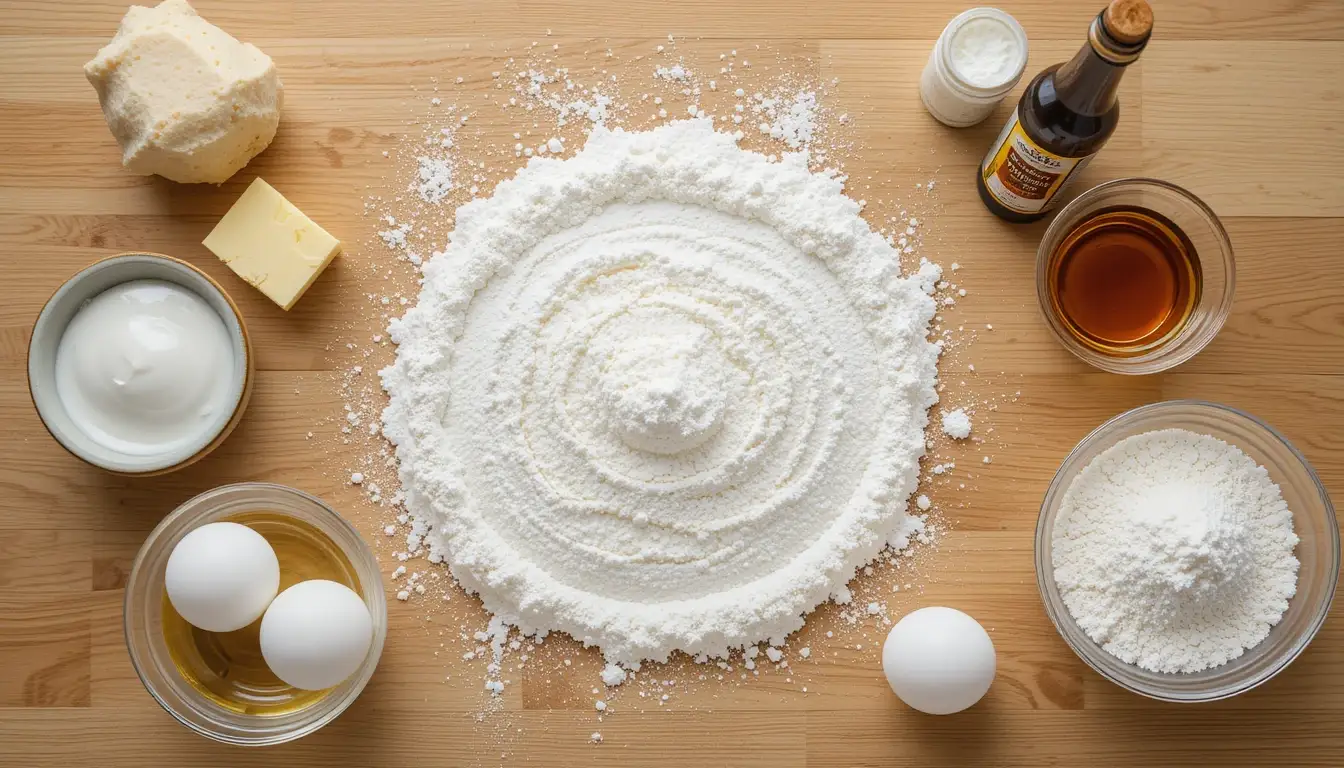
If you’re curious about the magic behind Christmas cake icing, it starts with a handful of simple ingredients. While recipes vary, these essentials are the backbone of any icing:
Sugar: The Essential Sweetener
At its heart, icing is sugar-based. Whether powdered, granulated, or superfine, sugar provides sweetness and structure. Powdered sugar (also known as icing sugar) is most commonly used because it dissolves easily and creates a smooth finish.
Butter or Shortening: Adding Creaminess
For rich icings like buttercream, butter or shortening is key. It adds creaminess and stability, ensuring the icing holds its shape while remaining spreadable.
Egg Whites: The Key to Royal Icing
Egg whites, particularly in royal icing, act as a binding agent. They create a firm texture that dries hard, making it ideal for intricate designs. Don’t worry—pasteurized egg whites or meringue powder can be used for safety!
Flavorings: Enhancing Taste
From vanilla extract to almond essence, flavorings give the icing its unique character. Citrus zests, spices, or even a splash of brandy can add a festive twist.
Popular Types of Christmas Cake Icing
Not all icing is created equal! Each type has its own charm and purpose. Here’s a closer look at the most popular options for Christmas cakes:
Royal Icing: The Classic Choice
Known for its crisp, snow-like finish, royal icing is a favorite for traditional Christmas cakes. Made with egg whites and powdered sugar, it dries hard, allowing bakers to create intricate designs that last.
Fondant: A Smooth Finish
Fondant icing is like edible playdough. It’s smooth, pliable, and perfect for covering cakes evenly. You can roll it out and shape it into beautiful decorations, from snowflakes to Santa hats.
Buttercream: A Rich and Creamy Option
Buttercream icing is all about indulgence. It’s soft, fluffy, and deliciously rich. While it doesn’t harden like royal icing, it’s perfect for those who prefer a creamy texture.
Marzipan: The Nutty Layer Beneath
Technically, marzipan isn’t icing—but it plays a big role! This almond-based paste is often layered under fondant or royal icing to create a smooth base and add a subtle nutty flavor.
How to Make Traditional Christmas Cake Icing
Ready to try your hand at icing a Christmas cake? Follow this guide for a foolproof finish:
Step-by-Step Guide to Making Royal Icing
- Gather Ingredients: You’ll need powdered sugar, egg whites (or meringue powder), and a splash of lemon juice.
- Mix: Whisk the egg whites until frothy, then gradually add powdered sugar.
- Consistency: Adjust the thickness with more sugar for a firm texture or water for a looser one.
- Apply: Use a spatula to spread the icing evenly or pipe it for detailed designs.
Tips for Rolling and Shaping Fondant
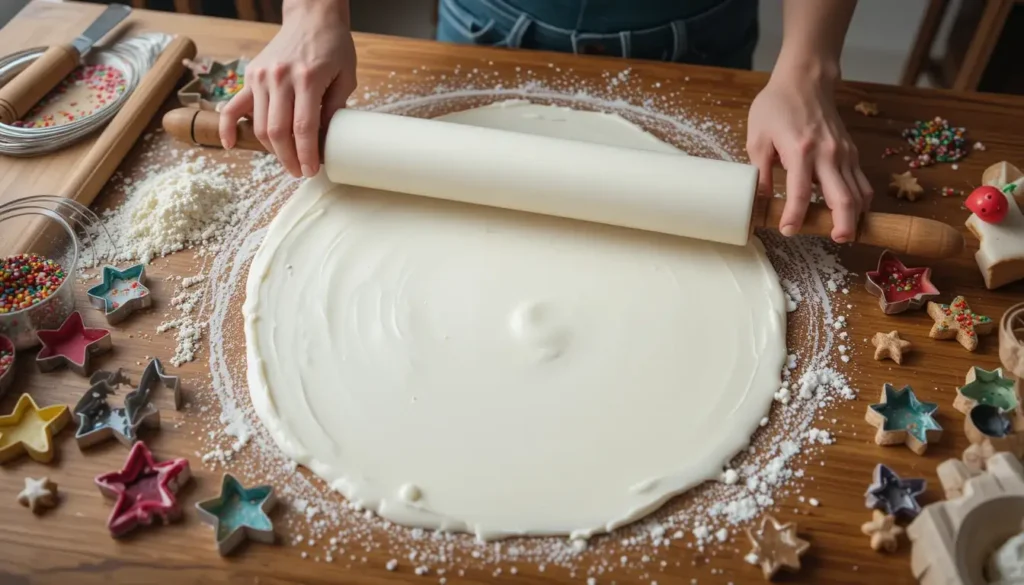
- Dusting: Sprinkle your surface with powdered sugar or cornstarch to prevent sticking.
- Rolling: Roll the fondant evenly to your desired thickness.
- Smoothing: Drape it over the cake, smoothing with your hands or a fondant tool for a flawless look.
“Perfecting icing is like painting a masterpiece—it takes patience, creativity, and a steady hand.” 🎨
Common Challenges in Making Christmas Cake Icing
Even the best bakers encounter hiccups. Here are some common issues and how to fix them:
Preventing Cracks in Fondant
Cracks often occur when fondant is too dry. To avoid this, knead it well and keep it covered when not in use. If cracks appear, a touch of water or vegetable shortening can help smooth them out.
Achieving the Right Consistency for Royal Icing
Too thick? Add a few drops of water. Too runny? Add more powdered sugar. The goal is a texture that’s easy to pipe but firm enough to hold its shape.
Balancing Sweetness and Flavor
Icing can be overly sweet. To counteract this, add a pinch of salt or a squeeze of lemon juice to balance the flavors.
Creative Ideas for Decorating Christmas Cakes
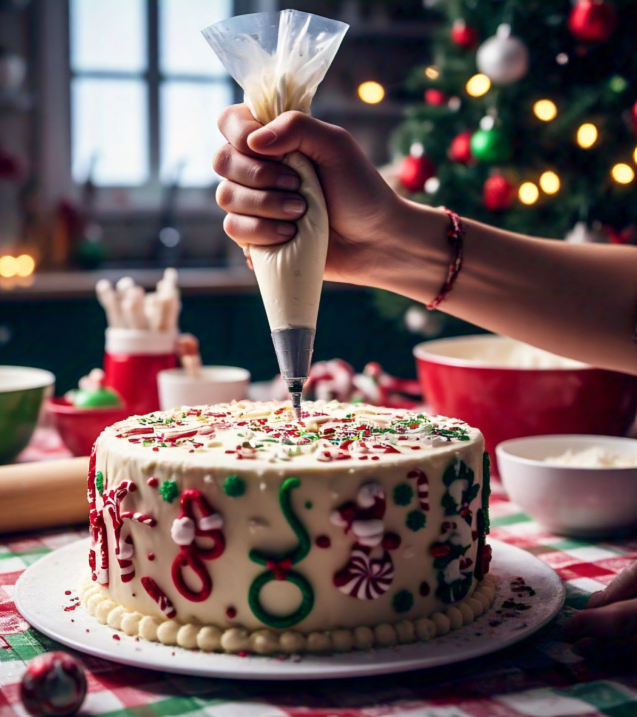
Decorating a Christmas cake is like putting the finishing touch on a festive masterpiece. The possibilities are endless, and with a little imagination, your cake can steal the spotlight at any holiday gathering. Let’s explore some creative ways to make your Christmas cake truly unforgettable.
Using Edible Decorations
Edible decorations are a fun and easy way to add flair to your cake. Think candy canes, gumdrops, or even chocolate figurines shaped like reindeer or snowmen. You can also use sprinkles, edible glitter, or gold leaf for a touch of sparkle.
For a more natural look, consider decorating with sugared cranberries, rosemary sprigs (they look like tiny Christmas trees!), or dried orange slices. These elements not only look stunning but also bring a festive aroma to your cake.
“Edible decorations turn your cake into a feast for the eyes and the taste buds.” ✨
Adding Color to Icing
Coloring your icing can bring your cake to life. Gel food coloring works best as it doesn’t alter the consistency of the icing. Go for classic Christmas colors like red, green, and white, or try metallic shades for a modern twist.
You can also use natural dyes, such as beet juice for red or spinach powder for green, if you prefer a more organic approach. When mixing colors, start with a small amount and build up gradually to achieve the desired hue.
Layering Techniques for a Stunning Effect
Layering isn’t just for the cake itself—it can elevate your icing design too! For instance, you can create a snowy landscape by layering different shades of white icing. Or try ombré effects, blending one color into another for a gradient look.
Another popular technique is piping textured patterns, such as rosettes, ruffles, or basketweave designs. A little practice with a piping bag can go a long way toward making your cake a showstopper.
Healthier Alternatives for Christmas Cake Icing
While traditional icing is undeniably delicious, it can be a bit indulgent. If you’re looking for healthier options, there are plenty of ways to enjoy the sweetness of the season without going overboard.
Sugar-Free Options
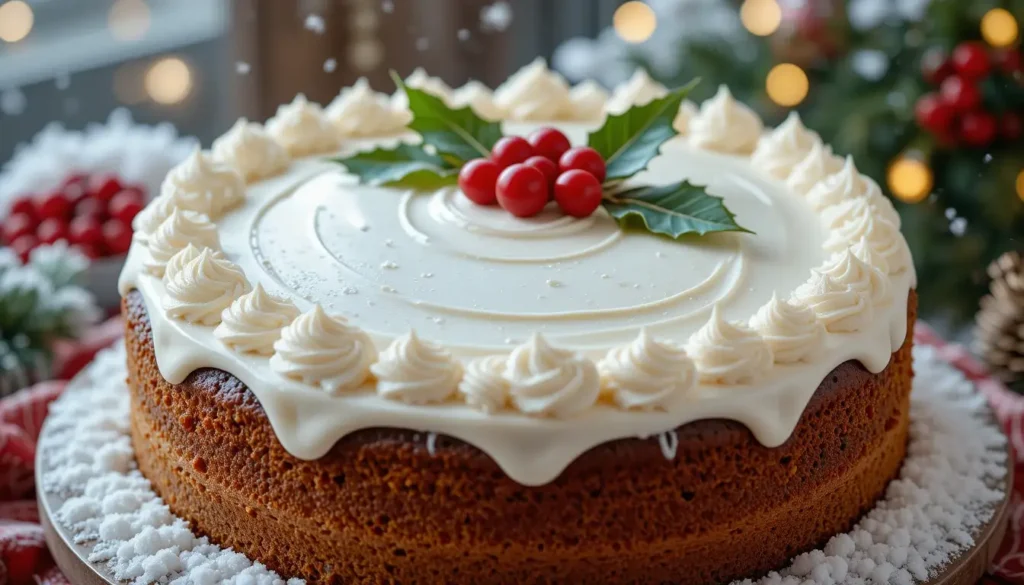
Cutting back on sugar doesn’t necessarily mean you have to compromise on flavor. In fact, you can easily try using natural sweeteners like stevia, monk fruit, or erythritol in your icing recipes. Not only do these alternatives work well in most types of icing, but they are also great options for those who are mindful of their sugar intake.
You can also use unsweetened applesauce or mashed bananas as a base for a softer, fruity icing. They add natural sweetness and moisture, making them a wholesome choice.
Vegan-Friendly Icing Recipes
For a plant-based option, swap out traditional ingredients like butter and egg whites for vegan substitutes. Coconut cream works beautifully in buttercream-style icing, while aquafaba (the liquid from canned chickpeas) can replace egg whites in royal icing.
Plant-based milks, such as almond or oat milk, can also be used to thin icing without compromising flavor. Add a touch of vanilla or almond extract for extra richness.
The Role of Christmas Cake Icing in Festive Traditions
Christmas cake icing is more than just a sugary topping—it’s a cherished part of holiday traditions around the world. From its cultural significance to the joy it brings to family celebrations, icing plays a starring role in the festive season.
Cultural Variations Around the World
In the UK, Christmas cakes are often covered with marzipan and a thick layer of royal icing, adorned with holly and berries. In contrast, Italian panettone and German stollen are typically dusted with powdered sugar or glazed with a thin icing.
While in the United States, buttercream frosting is popular for creating whimsical designs like Christmas trees and snowmen. Meanwhile, Scandinavian countries embrace simple elegance with smooth fondant or minimalistic icing patterns.
How Icing Brings Families Together During Christmas
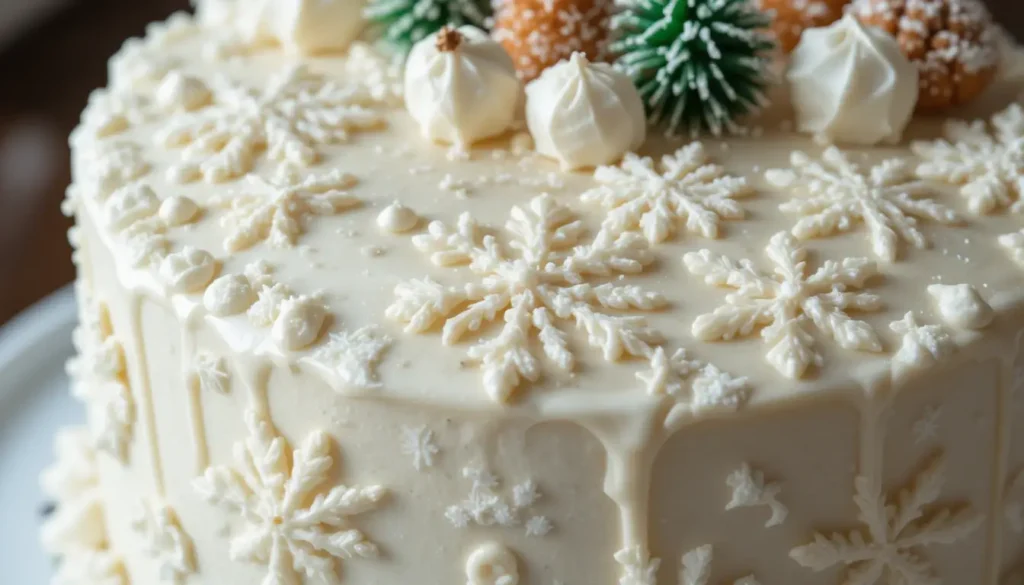
Decorating a Christmas cake is a beloved family activity. It’s an opportunity for everyone to gather around the table, unleash their creativity, and share laughter. Whether it’s rolling out fondant or piping intricate designs, the process is as joyful as the final result.
“The magic of Christmas cake icing lies not only in its taste but also in the memories it helps create.” 🎄
Frequently Asked Questions About Christmas Cake Icing
Can I make icing in advance?
Yes, most types of icing can be made ahead of time. Store royal icing in an airtight container and keep fondant tightly wrapped in plastic wrap. Buttercream can be refrigerated for up to a week but should be brought to room temperature and re-whipped before use.
How long does Christmas cake icing last?
The longevity depends on the type of icing. Royal icing can last for weeks if stored properly, while buttercream and fondant are best used within a few days. Always store iced cakes in a cool, dry place to prevent melting or drying out.
What’s the best way to store iced cakes?
Keep iced cakes in an airtight container or under a cake dome to protect them from air and moisture. Avoid refrigeration unless necessary, as it can cause condensation, which may affect the icing’s texture.
Can I freeze a cake with icing?
Yes, but it depends on the icing type. Buttercream and fondant freeze well, but royal icing can become brittle. Wrap the cake tightly in plastic wrap and foil before freezing to maintain freshness.
How do I fix cracks in fondant?
Simply knead the fondant with a small amount of water or shortening to restore its pliability. For surface cracks, use a damp brush to smooth them out.
What’s the easiest icing for beginners?
Buttercream is a great starting point. It’s forgiving, easy to make, and can be spread or piped with minimal fuss.
Conclusion: The Sweet Art of Christmas Cake Icing
Christmas cake icing is more than a delicious treat—it’s an art form that brings people together and adds joy to the holiday season. Whether you’re a seasoned baker or a beginner, experimenting with different types of icing can transform your cake into a festive masterpiece.
So, grab your mixing bowl, unleash your creativity, and let the icing do the talking this Christmas! After all, a beautifully iced cake is the ultimate symbol of holiday cheer. 🎅🎂
Explore More Festive Ideas:
- Learn how to create Christmas Tree Cakes for a festive centerpiece that complements your Christmas cake.
- Unwrap the Secrets of Little Debbie Christmas Tree Cakes for creative decoration ideas.
- Discover the Christmas Bark Recipe: A Festive Treat for the Holidays to diversify your holiday dessert table.

